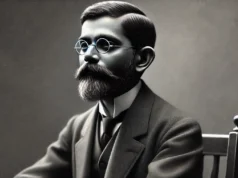
The story of the woman at the well (John 4) is conceivably the most iconic encounter in the New Testament. It is absolutely intriguing to note that it is the longest recorded discourse of Jesus with an individual.
We need to understand that successful communication can be possible only when the prevailing barriers are identified and removed. We can learn many lessons about communication from Jesus’ encounter with the Samaritan woman.
I will highlight three possible barriers that Jesus identified and then discarded during his conversation with the Samaritan woman.
Cultural Barrier
The Jews were forbidden to deal with Samaritans. Moreover, Jewish men did not speak to women in public places. However, Jesus was willing to breach the cultural barrier. We can understand from the authorial comment on the disciple’s response that “they marvelled that he was talking with a woman.”
But this hostility between the Jews and the Samaritans did not hinder Jesus’s conversation with the Samaritan woman. Moreover, Jesus encouraged the Samaritan woman to overcome the cultural barrier by offering her a spiritual drink. This act of Jesus aided her to engage in a free-flowing conversation with Jesus.
Moral/ Ethical Barrier
In the second phase of the dialogue, Jesus invited the Samaritan woman to bring her husband. This leads us to the next barrier, which is moral or ethical. After listening to the woman’s response, Jesus revealed her past life, which was a complete surprise to her.
Instead of rushing to complete His missional task, Jesus spent quality time with this despised woman. Jesus did not humiliate nor condemn this woman for her sinful life but commended her for being honest and telling the truth. He continued to patiently listen to her sad story of neglect and betrayal.
Theological Barrier
The Samaritan woman perceived Jesus as a Prophet. Therefore, she immediately presented the next concern, which is worship. Her cultural isolation and social discrimination were upheld by her religious affiliation. This brought forth the third barrier—that is, theological.
True, worship was a contentious topic between the Jews and the Samaritans. However, the ensuing dialogue guided the Samaritan woman in a gradual manner to realise the truth about Jesus as Rabbi, Prophet, and finally, Messiah.
Conclusion
Being the most effective communicator of all time, Jesus did not engage in philosophically-loaded religious talk. Instead, He shared the profound truth of salvation by addressing her real-life issues.
This encounter with Jesus transformed the Samaritan woman. As a magnificent communicator, Jesus helped her to cross all the barriers in her life. He helped her to move from casual talk to dialogue, from curiosity to wonder, and from debatable concerns to discipleship and witness.
Set free, now the Samaritan woman rushed back to her town to share her experience. She became a witness – the first evangelist – to the transforming power of Jesus.









